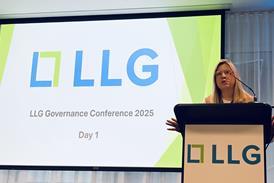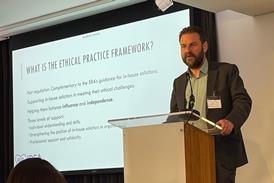Beset by problems such as delays in providing registration log-ins, several insurers not being registered on the system and countless technical hitches involving the online portal, many have described the new streamlined low value road traffic claims process as a shambles. With the Ministry of Justice introducing the new electronic claims procedure on 30 April 2010, and operational information on the electronic portal not being accessible until February 2010, there was little time for preparation and implementation. The resulting IT chaos therefore came as no real surprise, and the procedure was anything but ‘streamlined’ at the start.
The electronic portal is designed as a high-volume operation and it is anticipated that approximately 500,000 claims each year (around 75% of all personal injury claims) will be processed through it.
Despite negativity surrounding the new scheme, there are undoubtedly benefits to both sides. Simplification of the litigation procedure and the imposition of much stricter time limits means that, where cases remain in the scheme, claimants receive compensation much faster. Whereas previously insurers had three months to investigate claims under the personal injury pre-action protocol, the new procedure substantially reduces the time limit for responding on liability to 15 business days (or 30 business days for claims involving the Motor Insurers Bureau).
The scheme also specifically provides for an interim payment to be made to the claimant where a claim is not going to be capable of settlement on receipt of the initial medical evidence or if quantum cannot be agreed.
With all communications between claimant lawyers and insurance companies now being carried out via the dedicated secure online portal, gone are the old excuses of delays due to not having received letters and faxes. If a defendant insurer does not respond to the claims notification form or the settlement pack in the allocated time, the portal automatically locks the claim out, avoiding arguments as to whether they complied in time or not. Online standardised forms with mandatory data fields also ensure that the insurer receives all the essential information to be able to deal with the claim at an early stage.
There are also benefits in improved cashflow to claimants’ lawyers. Although the fixed costs paid are restrictive, the costs are payable at the end of each of stage, rather than the end of the case. Restrictive costs have led firms to think hard about their IT practices and internal procedures. This in turn should lead to an improved claims experience for clients and allow them a clearer understanding of the process involved. The new scheme has provoked a lot of discussion amongst fellow claimant lawyers, particularly through associations such as APIL and MASS, seeing members of the profession pulling together to share advice and experiences.
The MoJ, having rushed the scheme through subsequently, washed its hands of it stating that the running of the system was a matter for the industry, as it is funded by the insurance industry, not the MoJ. Perhaps if implementation had been delayed until the systems were more advanced there would more positivity about the whole process now.
Seven months on and many of the early teething problems have been overcome, but it is still too early to predict success. Preparations are under way for system enhancements to be rolled out in March 2011, so users on both sides should be encouraged to provide constructive feedback to shape and enhance the scheme.
Lord Young, in his recent report, Common Sense, Common Safety, stated that he would like to see the MoJ portal limit for RTA claims extended from £10,000 up to £25,000, and proposes that a similar system should be introduced into other areas of personal injury and lower-value clinical negligence cases. While benefits can be seen in the arena of RTA claims, such a standardised process is far too rigid for more complex areas of law, and such a role out should be approached with extreme caution. It is vital to maintain flexibility in the claims process to ensure that victims injured by the negligence of others are given the opportunity to be treated individually and with fairness.
The introduction of the new RTA process follows a persistent drive by insurers to cut the costs of personal injury claims, and some insurers, such as Zurich, have already reported significant cost savings. Nevertheless, the Association of British Insurers continues to make statements about the public paying for the so-called ‘compensation culture’ through increases in insurance premiums, banding about statistics that legal fees add £40 per annum to the average motor insurance premium. It makes no mention of its involvement in the development of the new MoJ scheme or the consequent costs savings being reported by some of its members. This does nothing but boost hype about the perceived ‘compensation culture’ and raises doubt that the public will actually see any costs savings being passed on.
Alex Drake , associate, Thomson Snell & Passmore



























No comments yet